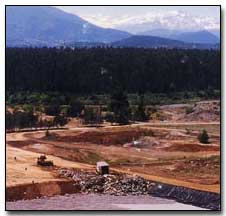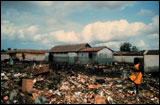What is a Sanitary Landfill?
Sanitary landfills are sites where waste is isolated from the environment until it is safe.
It is considered when it has completely degraded biologically, chemically and physically. In high-income countries, the level of isolation achieved may be high. However, such an expensive high level of isolation may not be technically necessary to protect public health. Four basic conditions should be met before a site can be regarded as a sanitary landfill (see following.) The ways of doing this should be adapted to local conditions. The immediate goal is to meet, to the best extent possible, the four stated basic sanitary landfill conditions, with a longer term goal to meet them eventually in full.
Small incremental improvements in landfill design and operation over several years are more likely to succeed than attempts to make a single, large leap in engineering expectations.
Large landfills will require more investment to improve standards than smaller sites. However, the unit cost of these improvements (measured per tonne of waste landfilled or per head of population served) will decrease with increasing site size. There are financial and other benefits to sites with long operating lifetimes (ten years or more). Large regional sites serving two or more cities could be economically beneficial, providing waste transport costs are not too high.
Basic requirements
As a minimum, four basic conditions should be met by any site design and operation before it can be regarded as a sanitary landfill:
• Full or partial hydrogeological isolation: if a site cannot be located on land which naturally contains leachate security, additional lining materials should be brought to the site to reduce leakage from the base of the site (leachate) and help reduce contamination of groundwater and surrounding soil. If a liner - soil or synthetic - is provided without a system of leachate collection, all leachate will eventually reach the surrounding environment. Leachate collection and treatment must be stressed as a basic requirement.
• Formal engineering preparations: designs should be developed from local geological and hydrogeological investigations. A waste disposal plan and a final restoration plan should also be developed.
• Permanent control: trained staff should be based at the landfill to supervise site preparation and construction, the depositing of waste and the regular operation and maintenance.
• Planned waste emplacement and covering: waste should be spread in layers and compacted. A small working area which is covered daily helps make the waste less accessible to pests and vermin.

|


